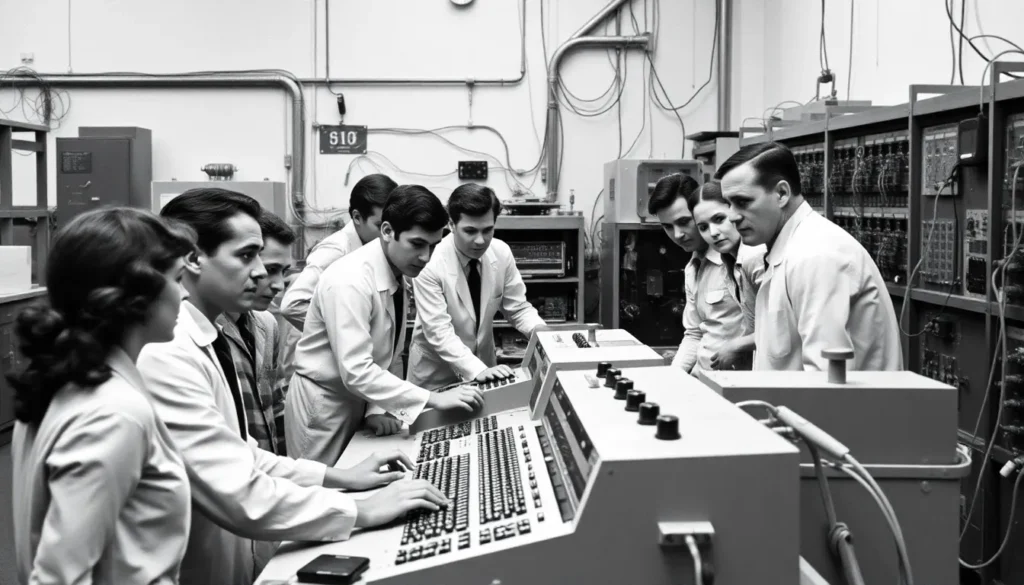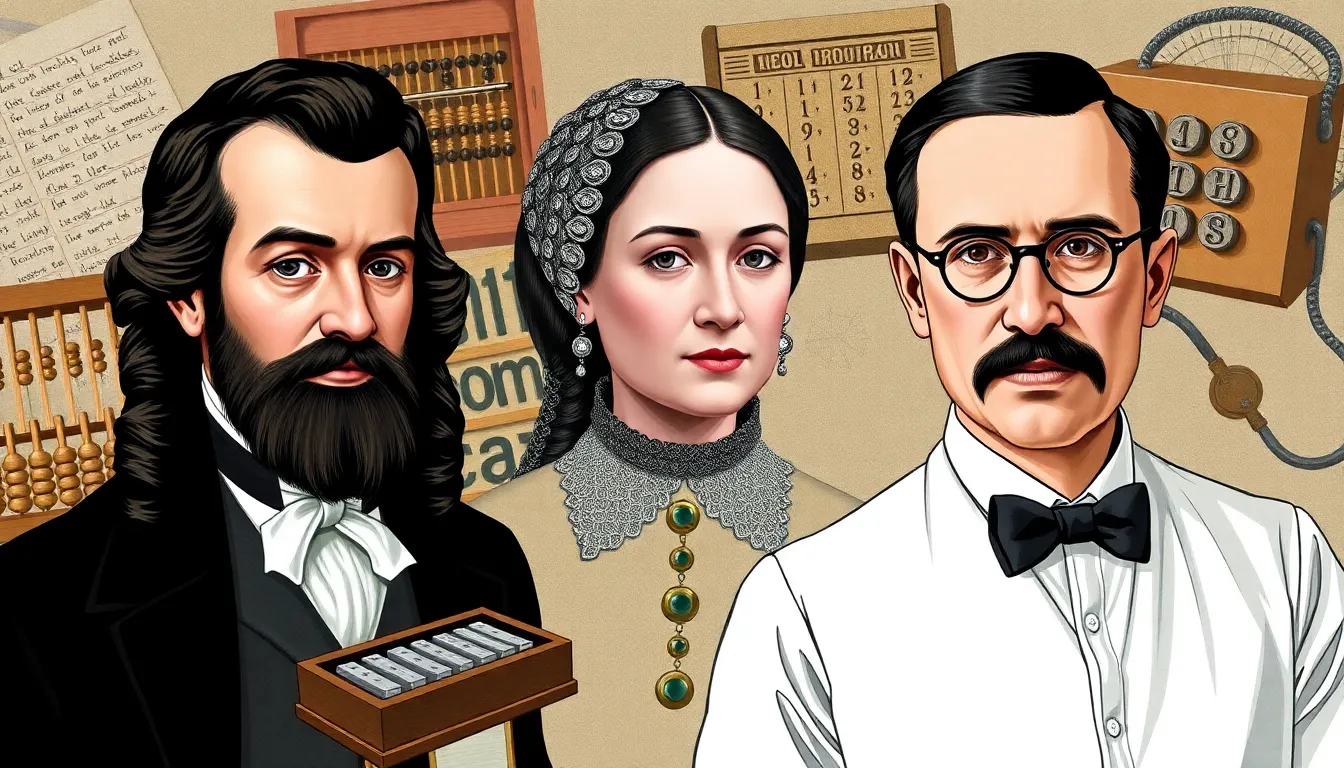
In a world where calculators used to be the pinnacle of technology, the invention of the computer was like discovering fire—except it didn’t require a cave or a caveman. The quest for smarter ways to crunch numbers and solve complex problems led to a revolution that changed everything. Imagine a time when humans had to do math without a computer. Yikes!
The computer was born out of necessity, a desire to simplify tasks and boost productivity. From the early mechanical marvels to today’s sleek laptops, each iteration has pushed boundaries and opened doors to new possibilities. So why was the computer invented? Spoiler alert: it wasn’t just to play endless games of Solitaire. Join the journey through time and discover how this remarkable invention reshaped our lives and continues to impact the world in ways we often take for granted.
Why Was The Computer Invented
The historical context of computing reveals a rich tapestry of innovations. Society’s need for organization and efficiency drove early developments in calculation.
Early Calculating Devices
Ancient civilizations crafted basic calculating devices. The abacus served as one of the first tools, allowing users to perform arithmetic tasks quickly. Mechanical devices followed, such as Pascal’s calculator from 1642, which influenced future inventions.
The Evolution of Technology
Technological progression sparked significant advancements in computing. The 19th century saw Charles Babbage design the Analytical Engine, envisioned as a mechanical computer. This conceptual leap paved the way for electronic computers in the mid-20th century.
Innovations like ENIAC and UNIVAC ushered in the digital age, providing substantial computational power. Each development built upon earlier achievements, highlighting humanity’s drive for enhanced productivity.
Major Influencers in Computer Development

Early advancements in computing trace back to several key figures and significant innovations. Their contributions shaped the development of technology and have had lasting impacts.
Key Figures in Computer History
Charles Babbage, often called the “father of the computer,” created the design for the Analytical Engine in the 1830s. Ada Lovelace, a mathematician, became the first computer programmer by writing an algorithm for Babbage’s machine. Alan Turing, known for his pioneering work, introduced concepts of algorithm and computation. He developed the Turing Machine, which laid the groundwork for modern computing. John von Neumann contributed to computer architecture with the von Neumann model, defining structure still used in computers today. These individuals advanced the field through innovation and strong vision.
Significant Innovations
Many significant innovations marked the computer’s evolution. The abacus served as an early calculating tool, aiding in basic arithmetic. Mechanical calculators, such as Pascal’s calculator from 1642, pushed boundaries further. The development of electromechanical computers in the early 20th century increased operational capacity. ENIAC, completed in 1945, became the first programmable digital computer, revolutionizing calculations. UNIVAC, introduced in 1951, saw commercial use and demonstrated practical applications for business. These innovations played crucial roles in transitioning from manual computation to electronic processing.
The Impact of World War II
World War II significantly accelerated the development of computers. This period prompted urgent requirements for advanced calculations, leading to groundbreaking innovations.
Military Applications
Military applications drove innovations in computing technology during this era. The need for efficient codebreaking became critical, prompting the creation of machines like the Bombe, designed by Alan Turing. These machines processed large volumes of data rapidly, enhancing strategies against Axis powers. Furthermore, the Manhattan Project relied on electronic computing to perform complex calculations related to nuclear weapon development. These projects highlighted the importance of computational power in military operations, developing a foundation for modern computing technology.
The Need for Speed and Efficiency
Speed and efficiency emerged as pivotal factors during World War II. Traditional methods of calculation proved inadequate for wartime demands. ENIAC, one of the first electronic general-purpose computers, showcased unprecedented processing capabilities with a speed of 5,000 calculations per second. This marked a shift from mechanical devices to electronic systems, enabling faster data processing and improved accuracy in military operations. Consequently, these advancements in efficiency laid the groundwork for future technological innovations and shaped the course of computing history.
The Role of Academic Research
Academic research significantly contributed to the invention of the computer. Universities became essential hubs for exploring computing principles and technology.
Universities and Early Computer Projects
Universities initiated several pioneering computer projects during the mid-20th century. The University of Manchester developed the Manchester Baby in 1948, recognized as the first stored-program computer. MIT’s Whirlwind project produced one of the earliest real-time computing systems. These institutions fostered environments for collaboration among researchers and engineers. Their efforts demonstrated theoretical concepts and practical applications in computing systems.
Government Funding and Support
Government initiatives provided crucial funding for computer research. The U.S. government supported projects like ENIAC through funding from the Army’s Ordnance Department. This financial backing fueled advancements in technology and research, aligning military goals with academic pursuits. Funding enabled universities to attract top talent and resources. The collaboration between governmental bodies and academic institutions accelerated the development and refinement of electronic computers.
Societal Changes Driven by Computers
Computers transformed society in profound ways. They reshaped industries and altered everyday life, driving efficiency and innovation.
Transforming Industries
Manufacturing sectors adopted computer technology to enhance production cycles. Automation increased output and reduced labor costs. Financial institutions relied on computers for real-time data analysis and faster transactions. Retail businesses embraced computerized inventory systems, streamlining operations. Healthcare benefited from electronic health records, improving patient care. Education systems integrated computers into curricula, enhancing learning experiences. The agricultural industry utilized computers for precision farming, optimizing yields. Each sector experienced significant advancements due to computer technology.
Everyday Life Before and After Computers
Daily tasks shifted dramatically with the advent of computers. Before computers, organizing information involved manual processes and paperwork. Communication depended on phones or postal services, which lacked immediacy. After computers, people could access information instantly through the internet. Modern conveniences like online shopping made transactions easier and faster. Social interactions changed with the rise of social media platforms, connecting individuals globally. Personal productivity improved through applications that assist in planning and task management. Life became more interconnected as computers influenced how people live and work.
Conclusion
The invention of the computer stands as a pivotal moment in human history. It’s not just a tool for calculation but a catalyst for societal transformation. From enhancing productivity in industries to revolutionizing communication and education, computers have fundamentally changed how people interact with the world.
As technology continues to evolve, the legacy of early computing pioneers remains evident in today’s innovations. Understanding the roots of this remarkable invention provides valuable insights into the future trajectory of technology. The journey of the computer is far from over and its impact will only grow in the years to come.


